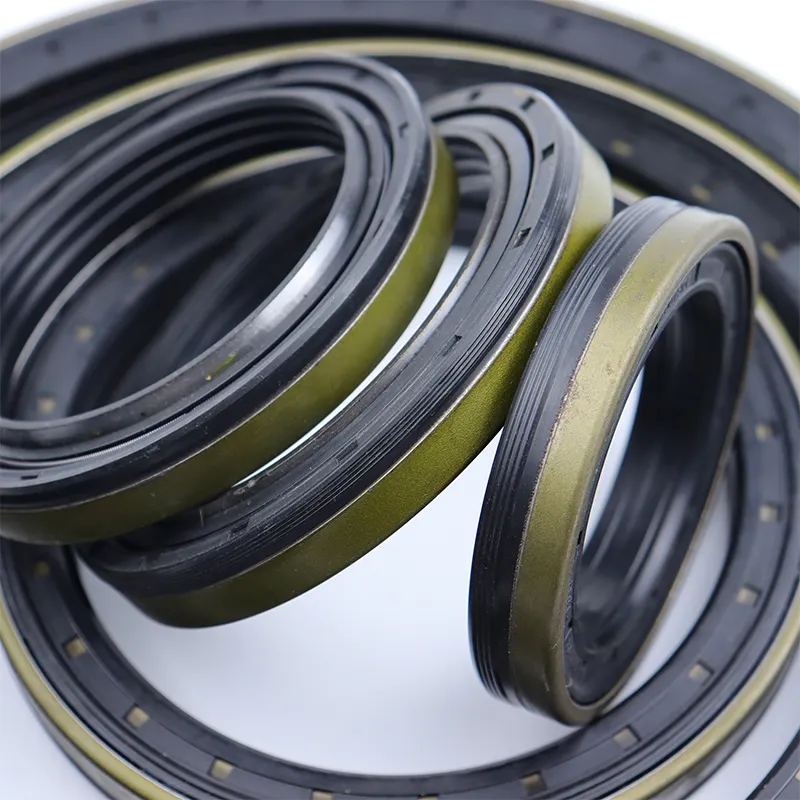10 月 . 21, 2024 15:10 Back to list
Shaft Seal for Enhanced Performance in Wheel Hub Applications
Understanding Shaft Seal Wheel Hubs A Comprehensive Overview
In the realm of mechanical engineering and automotive design, the significance of shaft seals cannot be understated. These components serve as critical interfaces between rotating and stationary parts, preventing the escape of lubricants and the ingress of contaminants. Among the various applications of shaft seals, one prominent use is in wheel hubs, where they play a pivotal role in ensuring the smooth operation and longevity of vehicles.
What is a Shaft Seal?
A shaft seal, also known as a rotary seal or oil seal, is designed to keep lubricants in and contaminants out. It typically consists of a flexible elastomer that fits tightly against the rotating shaft and a rigid outer casing that is secured to the stationary part of the assembly. The design of a shaft seal allows it to maintain a barrier against various environmental factors, including dirt, water, and other debris that could potentially damage internal components.
The Role of Shaft Seals in Wheel Hubs
In wheel hub assemblies, shaft seals are installed to protect the bearings and other critical components from the harsh operating environment. Wheel hubs endure significant exposure to road debris, moisture, and temperature fluctuations, which can lead to premature wear and failure of the bearings if not properly sealed.
1. Contaminant Exclusion The primary function of a shaft seal in a wheel hub is to prevent dirt, dust, and water from entering the hub assembly. Contaminants can lead to corrosion, pitting, and eventual failure of the bearings and gears within the hub. By sealing off these entry points, shaft seals help maintain the integrity of the internal components.
2. Lubricant Retention Wheel bearings need to be adequately lubricated for optimum performance. The presence of a shaft seal helps ensure that the lubricant remains within the assembly, reducing friction and wear. Proper lubrication is crucial for extending the lifespan of the bearings and preventing overheating.
3. Pressure Management During operation, changes in pressure can occur within the hub assembly due to thermal expansion or other factors. A well-designed shaft seal can accommodate these pressure changes without compromising its sealing capability.
shaft seal wheel hub

Types of Shaft Seals Used in Wheel Hubs
There are several types of shaft seals that can be employed in wheel hubs, each with its own set of advantages
- Lip Seals These are the most common type of shaft seals used in wheel hubs. They feature a flexible lip that makes contact with the rotating shaft, creating a tight seal that prevents lubricant leakage and contaminants from entering.
- Radial Seals Radial shaft seals are designed to handle the dynamic movement of shafts in a radial direction. They offer excellent resistance against wear and are suitable for high-speed applications, making them ideal for vehicle wheel hubs.
- Mechanical Seals Although less common in wheel hubs compared to lip seals, mechanical seals offer extreme performance in high-pressure or high-temperature applications. Their design usually incorporates multiple elements that work together to create a robust barrier against fluids and contaminants.
Importance of Regular Maintenance
To ensure the optimal performance of wheel hub assemblies, regular inspections and maintenance are essential. This includes checking the condition of shaft seals, as any signs of wear or damage could compromise their effectiveness. If a seal fails, it can lead to costly repairs, including replacing bearings or even the entire wheel hub assembly.
Conclusion
Shaft seal wheel hubs are vital components in modern vehicles that ensure efficiency, safety, and longevity. Understanding their function and the technology behind them helps manufacturers design better systems and informs vehicle owners about the importance of maintenance. As automotive technology continues to evolve, the role of shaft seals will expand, adapting to new challenges in performance and efficiency. Emphasizing the significance of high-quality seal materials and designs will remain crucial for the reliable operation of vehicles around the globe. By prioritizing the integrity of these seals, we contribute to safer and more efficient transportation systems for all.
-
The Power of Advanced Sealing: High-Pressure Solutions for Modern Machinery
NewsOct.29,2024
-
Optimizing Machinery with High-Performance Oil Seals
NewsOct.29,2024
-
Maximizing Machinery Efficiency with Advanced Oil Seals
NewsOct.29,2024
-
Ensuring Equipment Longevity with Quality Oil Seals
NewsOct.29,2024
-
Enhance Equipment Performance with Quality Oil Seals
NewsOct.29,2024
-
Custom Oil Seals for Specialized Machinery Needs
NewsOct.29,2024
-
The Role of Wiper Seals in Dust Sealing and Oil Protection
NewsOct.20,2024
Products categories
















